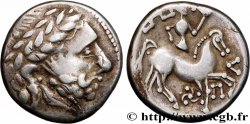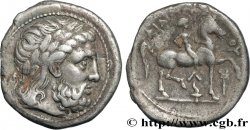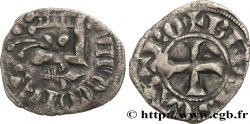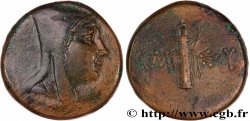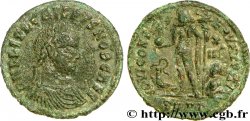MONNAIES 59 (2013)
Начальная цена : 450.00 €
Назначить цену : 750.00 €
Цена реализации : 990.00 €
Количество ставок : 4
Максимальная предлагаемая цена : 1 800.00 €
Начальная цена : 450.00 €
Назначить цену : 750.00 €
Цена реализации : 990.00 €
Количество ставок : 4
Максимальная предлагаемая цена : 1 800.00 €
Тип Tétradrachme “Dreieckhals”
Дата: c. IIe-Ier siècles AC.
Монетный двор / Город: Atelier indéterminé
Металл: silver
Диаметр: 24 mm
Ориентация осей монеты: 9 h.
Вес: 11,55 g.
Редкость: R3
Комментарии о состоянии
Exemplaire sur un flan ovale et bombé bien centré des deux côtés. Très belle tête de Zeus au droite, stylisée et expressive. Revers bien venu à la frappe, stylisé, mais pas encore désarticulé. Très jolie patine de collection ancienne avec des reflets mordorés
Происхождение:
Cet exemplaire provient de la collection du docteur Thierry de Craeker
Лицевая сторона
Аверс: легенда: ANÉPIGRAPHE.
Аверс: описание: Tête barbue et laurée de Zeus à droite stylisé, la barbe et le diadème formé de lignes perlées.
Обратная сторона
Реверс: легенда: ANÉPIGRAPHE.
Реверс: Описание: Cheval galopant à gauche, stylisé, la tête triangulaire, les jambes formées par des globules, surmonté d’un astre perlé et centré d’un globule.
Комментарий
Mêmes coins que l’exemplaire de Kelten im Osten (p. 119, n° 664). C’est la première fois que nous proposons ce type à la vente qui semble beaucoup plus rare que ne le laissent supposer les ouvrages généraux.
Same corners as the copy from Kelten im Osten (p. 119, no. 664). This is the first time we have offered this type for sale, which seems much rarer than general works suggest.
Same corners as the copy from Kelten im Osten (p. 119, no. 664). This is the first time we have offered this type for sale, which seems much rarer than general works suggest.







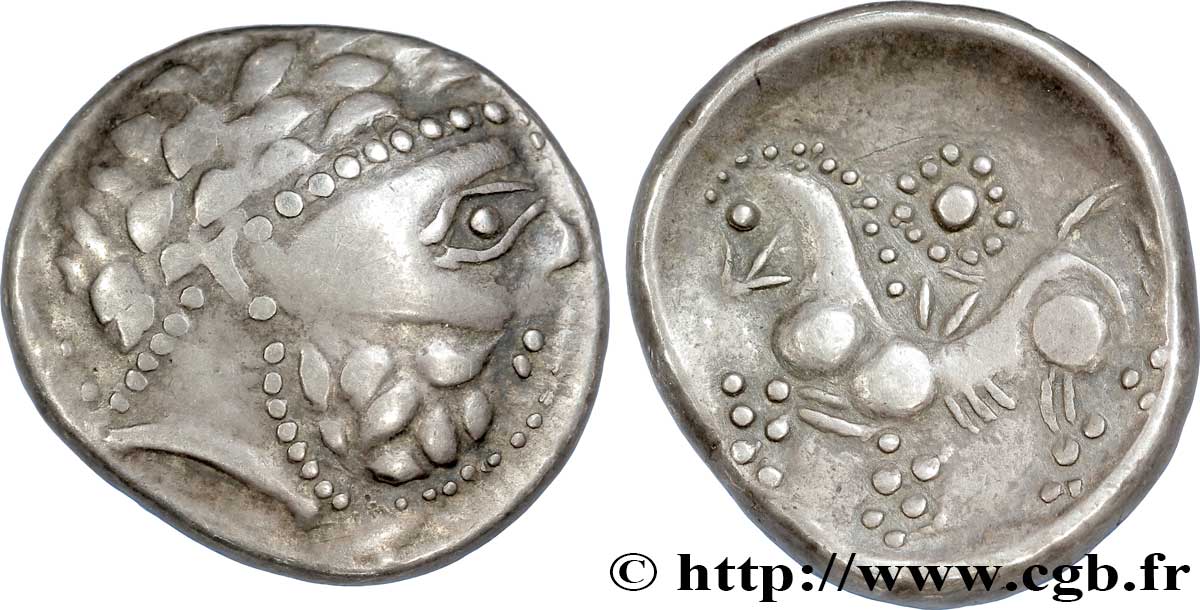
 Cообщить об ошибке
Cообщить об ошибке Распечатать страницу
Распечатать страницу Отправить мой выбор
Отправить мой выбор Задать вопрос
Задать вопрос Consign / sell
Consign / sell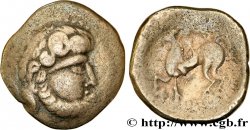
 Информация
Информация